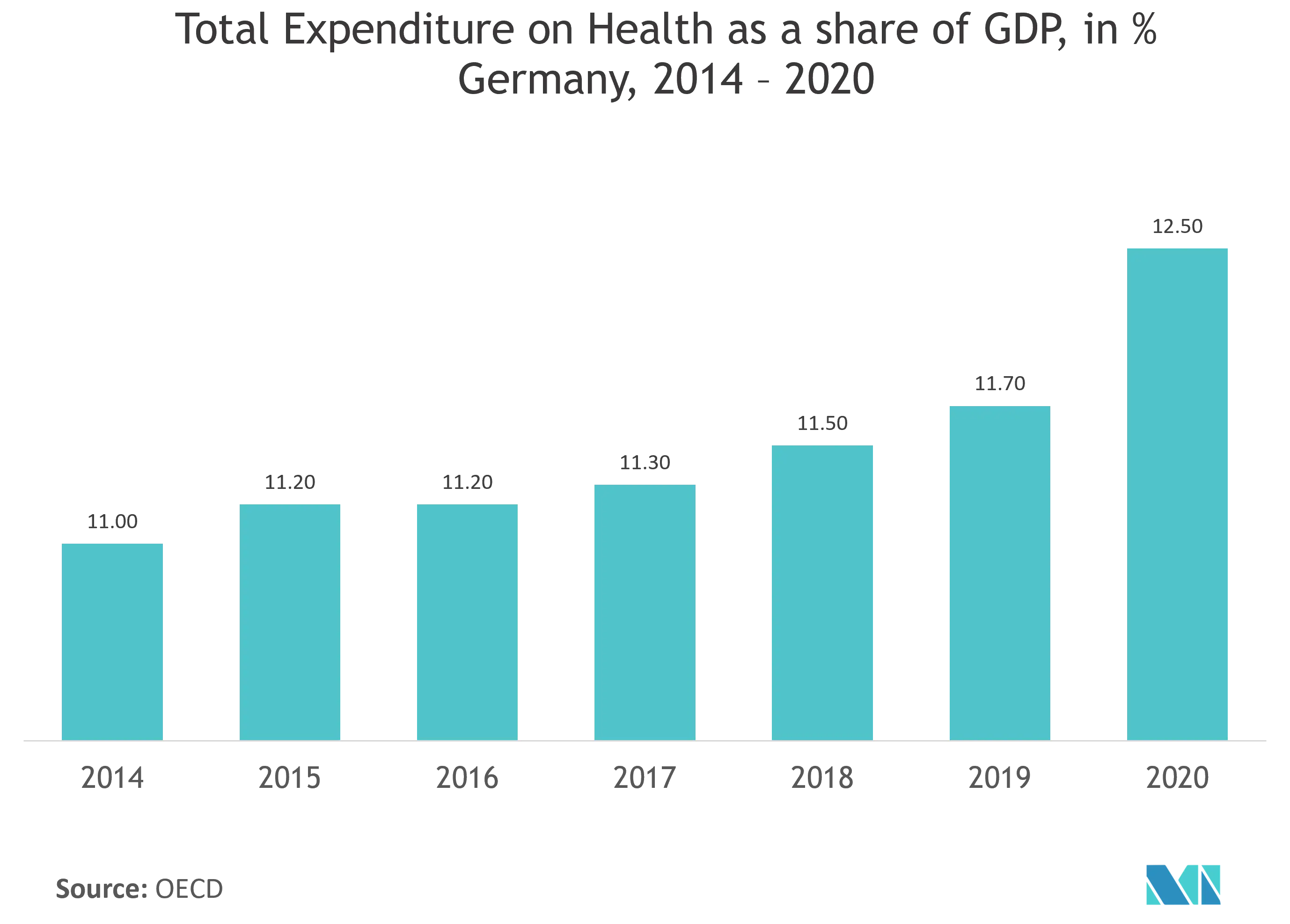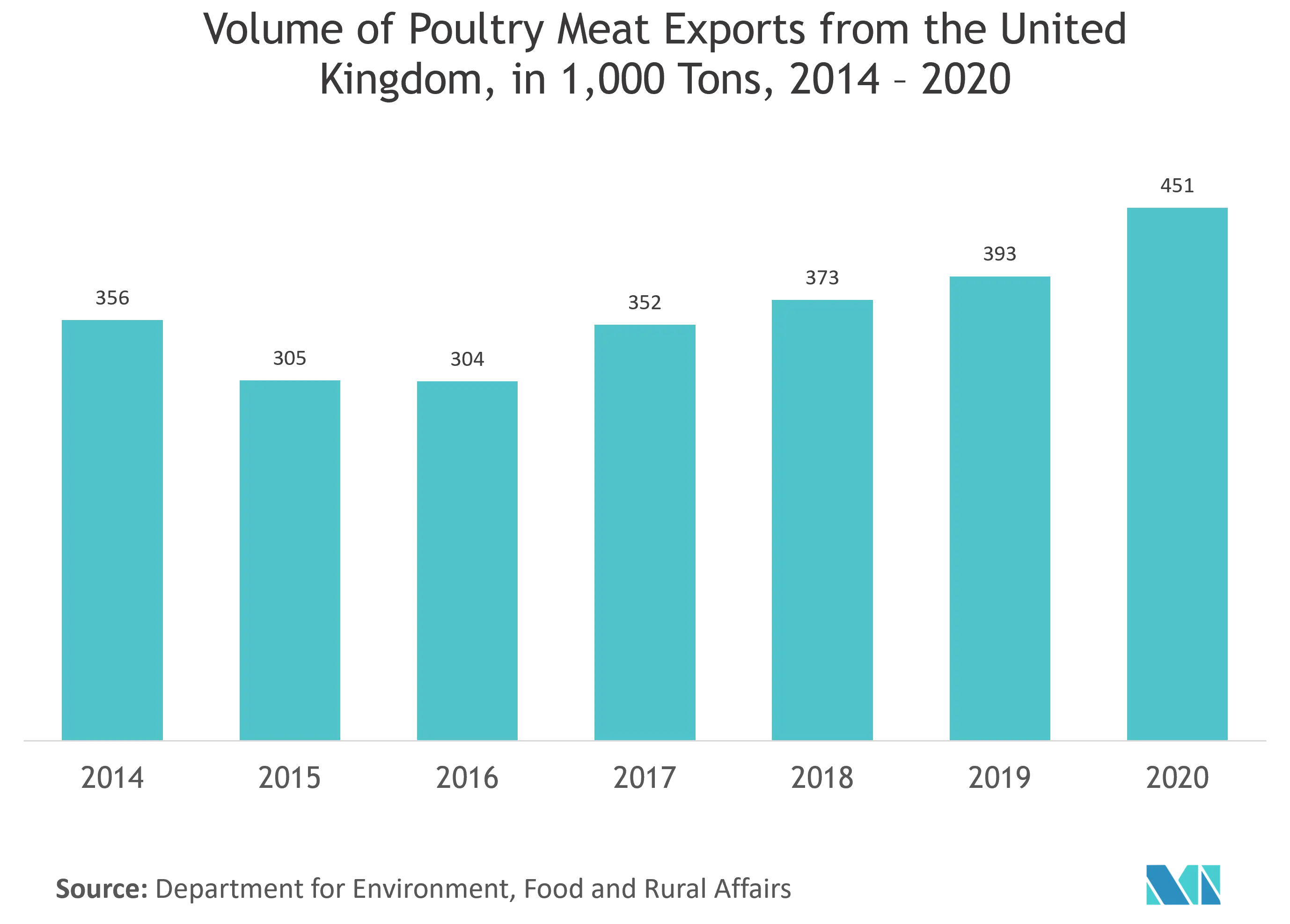Market Trends of Europe Active and Intelligent Packaging Industry
This section covers the major market trends shaping the Europe Active & Intelligent Packaging Market according to our research experts:
Healthcare Sector is Anticipated to Witness Significant Growth
- The healthcare industry poses many challenges to packaging, such as products’ regulations, stipulations, instructions, etc. Pharmaceutical packaging is highly focused on creating tamper-proof and child-resistant packaging. But counterfeit operations can mimic these packaging trades and give the illusion of a legit product.
- In Germany, healthcare device packaging is experiencing growth as hospitals are concentrating more on sterile and disinfected packaging of medical devices due to a rise in viral infections and various stringent government safety regulations.
- According to Statistisches Bundesamt, the industry revenue of packaging activities in Germany is expected to reach USD 3,849 million in 2023 from USD 3,226.4 million in 2011. As nearly half of all the German packaging activities cater to the domestic demand, such revenue improvements in the packaging activities prompt the increased activity in the German packaging industry, boosting the studied market growth.
- Apart from retail and e-commerce, the United Kingdom pharmaceutical industry also offers various market opportunities. For instance, according to the Office of National Statistics (UK), the consumer spending on pharmaceutical products was GBP 10,737 million in 2020 as compared to GBP 9,888 million in 2018, which was significant growth.
- Technologies that will enable features, including sensors, radio-frequency identification (RFID), programmable alerts, electronic anti-tamper safeguards, and tracking systems, are all making rapid progress. Though the costs are coming down, the key to bringing active and intelligent packaging closer to the market will be the development of its supply chain, which can hopefully help the industry make larger numbers swiftly.

United Kingdom is Observing a Notable Growth
- The increasing urban population in the United Kingdom is contributing significantly to the growth of the market studied. According to the World Bank, the degree of urbanization in the United Kingdom amounted to 83.9% in 2020. The altering patterns in lifestyle, including the decreasing amount of time spent on the preparation of meals, is leading to a shift toward more processed, easily-packed, and pre-prepared foods and snacks, which is expected to propel the growth of the market studied.
- The country observed an increase in meat export in the last few months, which is bolstering the growth of active packaging. According to the recent statistics published by HMRC, the country's lamb exports to Switzerland increased over 200% in the first six months of 2020 compared to last year.
- Despite reassurances from the UK's Prime Minister in the first week of September 2020 that the country is ready for any eventuality, many key issues remain unresolved. Brexit contingency preparations are proceeding at a snail's pace, and the UK Government's "Brexit Report Card" to date will weaken the export system that is about to become massively overloaded. Unless a number of key issues are urgently addressed, GBP 1.2 billion worth of annual meat exports will be at risk, along with thousands of jobs in the meat and livestock sector. This will pose a threat to the country's active packaging ecosystem for the coming years.
- Due to the COVID-19 pandemic, nations across the world witnessed lockdown restrictions, which led to panic buying. This imposed massive pressure on the FMCG companies to adopt flexible packaging solutions, as the food companies increasingly witnessed an inclination toward pre-packaged food in smaller, consumer-sized packaging.


